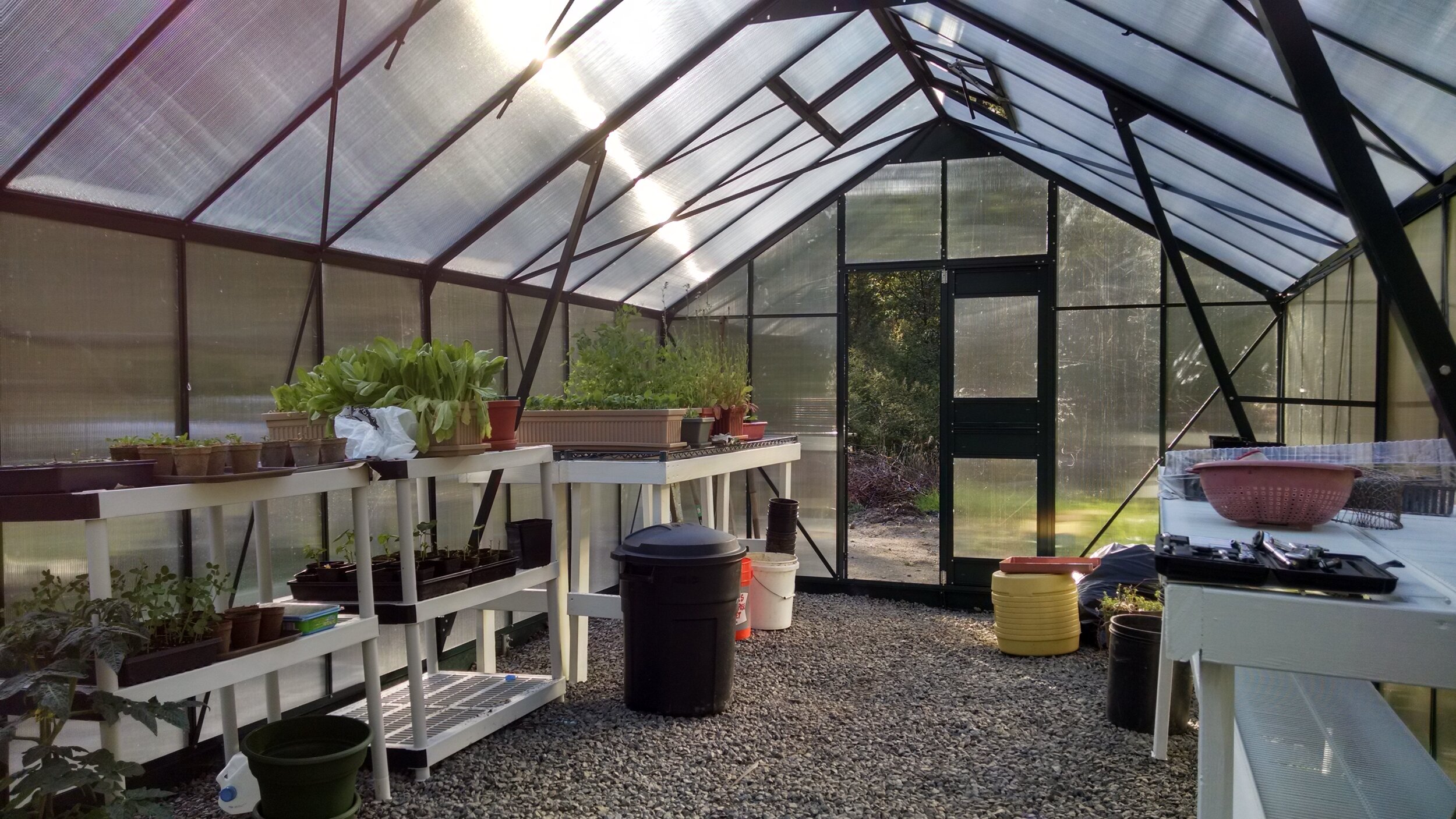GREEN GREENHOUSES for the SAN JUAN ISLANDS by Allison Longley
San Juan Island currently imports over 80% of its’ food. We are vulnerable to potential food shortages in our increasingly unpredictable climate. By growing the majority of our food locally, we can become more self-reliant, avoid the energy costs of transportation over long distances, and enjoy the taste of REALLY fresh food.
What about winter? What green solutions are possible? Growing locally, can we have the variety we’re accustomed to? Citrus in December, tomatoes year-round, bananas?
The answer is yes.
From cold frames to tropical greenhouses, a range of solutions using little or no fossil fuel can provide fruits and vegetables throughout the year in our climate. These are summarized below.
1. Row covers, cold frames, hoop houses, and combinations:
Frost-tolerant plants, such as broccoli, onions, lettuce, and spinach, can be grown under simple row covers or in cold frames that offer some shelter from wind. Hoop houses high enough to stand up in offer similar protection, and they can be combined with row covers or cold frames for even more protection.
2. Solar greenhouses, or Mediterranean greenhouses
These greenhouses get close to freezing in winter. Cold-tolerant vegetables, perennials, and trees can produce beans, figs, and some citrus fruits, for example.
3. Hothouses, or tropical greenhouses
These structures are ideal for growing heat-loving plants including tomatoes, eggplant, bananas, and oranges year-round.
Traditional greenhouses use fossil fuels for heating on cloudy days in winter, but with careful design, most or all energy requirements for even tropical greenhouses can be met using free solar energy. These design elements include:
orientation toward the south, insulated glazing, a heavily insulated north wall and insulation of the soil around the greenhouse perimeter, incorporation of thermal mass, solar hot water heating, and a “climate battery” or “Ground-to-air Heat Transfer (GHAT) system which involves storing heat in the soil during sunny days and circulating warmed air later as needed. Most of these options can be utilized relatively inexpensively.
Although direct use of stored solar heat is far more efficient than electric heat, back-up heating may need to be provided during cold spells. A simple electric heater, preferably solar powered, may suffice for a small greenhouse. Rocket stoves and compost heaters are also options. Electrically powered fans and lighting may also be needed, depending on the plants chosen and other factors, but their power requirements are relatively modest.
Who uses green greenhouses?
Individuals and families, market growers, schools and community organizations- in short, anyone with an interest in growing food right here. Presently, one of our chief needs on San Juan Island is information on how and what we can grow without further endangering our climate by using fossil fuels. The bibliography below is a useful start
BIBLIOGRAPHY
Coleman, Eliot, 2009. The Winter Harvest Handbook: year-round vegetable production using deep-organic techniques and unheated greenhouses. Chelsea Green Publishing. ISBN 9781603580816 1603580816
The author describes his “cold” or “cool” greenhouse for frost tolerant crops.
Available at the San Juan Island Librar
Osentowski, Jerome, 2015. The Forest Garden Greenhouse: How to Design and Manage an Indoor Permaculture Oasis. Chelsea Green Publishing. 294 pp. ISBN 978-1-60358-426-5
Very readable and detailed description of the author’s and others’ greenhouses using a climate battery to produce a Mediterranean climate in Colorado winters
Schiller, Lindsey and Plinke, Marc, 2016. The Year-Round Solar Greenhouse: How to Design and Build a Net-Zero Energy Greenhouse. New Society Publishers. 307 pp. ISBN 978-0-86571-824-1
Excellent and clear summary of many fossil-free designs ranging from row covers to tropical greenhouses, with case studies and further reading.
Available at the San Juan Island Library

